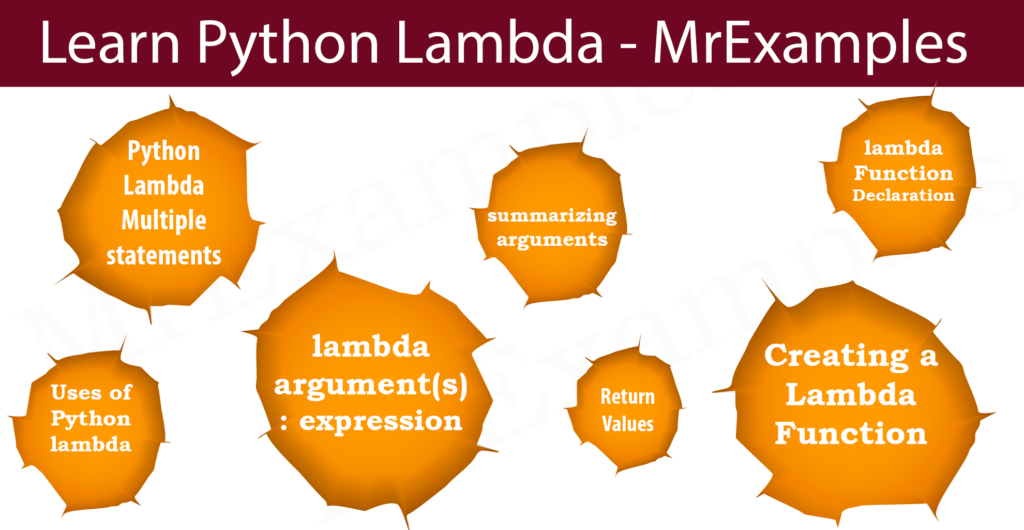Python Lambda
The Python lambda topic will be covered with examples to give readers a taste of what is to come.

Python Lambda functions are small anonymous functions in Python.
Lambda functions are created by using the lambda expression instead of def.
Lambda functions in Python can take any number of arguments, but only have one expression. The lambda function can be declared as follows:
lambda argument(s) : expression - argument(s) – A value to be passed to lambda.
- expression – Executes and returns expression.
Example:
A result is returned after the expression has been executed:
Example: Take argument x and add 15 to it:
Arguments for Python lambda functions can be any number:
Take argument x and multiply it by argument y to get the result:
Example
Return the result of summarizing arguments x, y, and z:
Example
Lambda Functions: Why Should You Use Them?
The power of lambda is better shown when you use them as an anonymous function inside another function when it comes to Python lambda.
Say you have a function definition that takes one argument, and that argument will be multiplied with an unknown number:
def mrxfunc(new): return lambda x : x * new
Create a function that doubles any number you send in using that function definition:
Example:
You can also make a function that always triples the input number using the same function definition:
Example:
You can make both functions in the same program by using the same function definition:
Example:
Tip: Whenever you need a short-term anonymous function, use lambda functions.
Python Lambda Usage
The following are the uses of Python Lambda:
- Lambda functions in Python are used to create anonymous functions, which are functions without a specified name. They are defined using the
lambdakeyword followed by a set of arguments and an expression. Lambda functions are useful when you need to create a small, one-line function without the need for a formal function definition. - Lambda functions can take any number of arguments, including optional ones. These arguments are specified after the
lambdakeyword, similar to regular function parameters. Lambda functions are commonly used when you need a simple function to operate on input arguments without the need for a full-fledged function definition. - Lambda functions provide a concise syntax for defining functions in a single line. This can be especially useful when you want to define a small function or perform a quick operation without defining a separate function.
- Lambda functions are often used in conjunction with higher-order functions such as
map(),filter(), andreduce(). These functions take other functions as arguments, and lambda functions provide a convenient way to define these functions on the fly without the need for a separate function definition. - Lambda functions are a key component of functional programming in Python. Functional programming emphasizes the use of immutable data and the application of pure functions. Lambda functions, with their concise syntax and ability to create anonymous functions, align well with the principles of functional programming and allow for more expressive and concise code.
